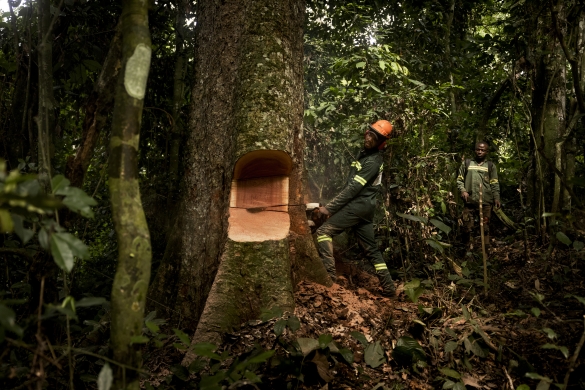Usædvanligt store nedbørsmængder over et kæmpemæssigt område har fordrevet tusinder og beskadiget veje og broer – selv når regnen falder normalt, er katastrofeberedskabet ringe, så en større test forestår, da regntiden varer til ind i maj.
NAIROBI, 11 April 2013 (IRIN): “Above-normal rains have occurred in several areas, including northern and western Tanzania; Rwanda; Burundi; the Lake Victoria Basin; western, southern and northeastern Kenya; southern and central Somalia; and eastern and south-eastern Ethiopia,” states an update by the Famine Early Warning Systems Network (FEWS NET).
Even normal rains can cause flooding and damage in areas with poor drainage (afløb, kloakering); this year’s heavy rains are already beginning to test the emergency responses in many flood- and disaster-prone (udsatte) areas.
The rains, which have “caused significant flooding in the Lake Victoria basin in Uganda and Kenya, the southern Maasai rangelands in Kenya, and along the Wabi Shabelle in Ethiopia in late March and early April”, according to the update, started between mid-March and early April and are likely to continue through May.
Kenya
In Kenya, at least 18.633 people have been displaced by flooding since the onset of the rains, according to the Kenya Red Cross Society (KRCS). Some 32 deaths have also been recorded, with others being injured.
The number of people displaced could rise to about 30.000 before the rainy season ends, said Nelly Muluka, the KRCS communications manager.
“We are also working on searching for the unaccounted people and sensitizing (fortælle) communities on the need to move to safer areas,” said Muluka. KRCS is distributing food and non-food items to affected families, but there is a need for medical care and additional food and shelter.
Ahead of the rains, Kenya’s meteorological department had warned of generally enhanced (øget) rainfall over the western highlands, Lake Basin, central Rift Valley and the central highlands, including Nairobi, in March and April.
“We expected floods in areas like Nairobi, Central, Coastal and Western Kenya, and have already put aside food and non-food items for potential victims,” Andrew Mondoh, the permanent secretary in the Special Programmes Ministry, told IRIN.
In the coastal area of Tana River, hundreds of families marooned (hjemsøgt) by floods have been rescued by helicopter and moved to safer areas, added Mondo.
The rains have also destroyed roads in the Rift Valley areas of Kajiado and Narok and in the western area of Kisumu.
Somali refugees
In northeastern Kenya’s Dadaab refugee complex, home to about 463.000 mainly Somali refugees, the rains have displaced some families and affected commodity prices.
Parts of a 90 km road, linking the main region of Garissa to the Dadaab refugee complex, have been rendered impassable, affecting transport and commerce.
Movement within the Ifo-1 and Ifo-2 camps becomes especially difficult during the rainy season due to flooding, which makes aid delivery difficult.
“It is a mixture of sadness and happiness during the rainy season in Dadaab; we really need the rain because it is always very hot and we get more milk from the neighbouring locations, but we have no proper shelter and the prices of some foodstuffs become higher,” said Muhubo Aden Kusow, who runs a grocery store at one of the the Ifo camps.
The heavy rains are expected to continue over the next two weeks, according to Ayub Shaka, the deputy director of Kenya’s Department of Meteorological Services.
“It is difficult to say where floods will occur in the next two weeks for example, but the best we can do is to ask people living in flood-prone areas to stay alert and safe,” said Shaka.
Somalia
Læs videre på
http://www.irinnews.org/Report/97830/In-East-Africa-heavy-rains-test-emergency-preparedness














